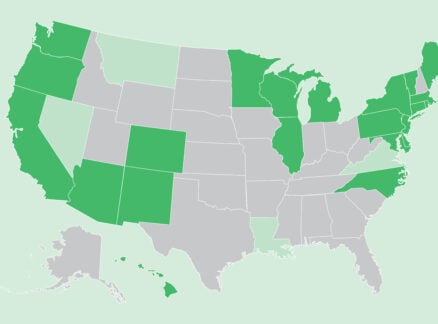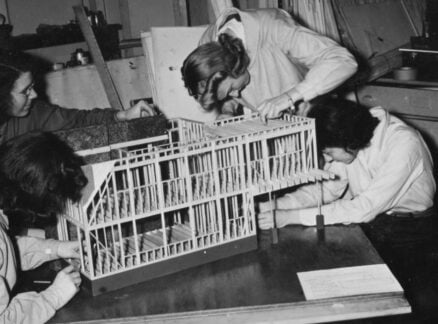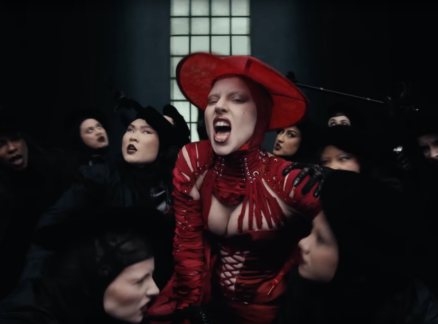
October 3, 2017
How New York Designers Like Fernando Mastrangelo Are Cutting Out Gallery Middlemen
Mastrangelo recently turned his studio into a showroom for up-and-coming designers, though he isn’t the only one exploring this new formula.

When designer Fernando Mastrangelo found a 10,000-square-foot studio space in East New York, Brooklyn, he suddenly saw an opportunity—one that had more to do with the design community than with his own work.
To christen the space, he reached out to other designers, mostly from within the New York scene, to submit work for the inaugural exhibition of In Good Company, his new initiative to support emerging and mid-career design talent. That call resulted in a group show in the space that will become the designer’s showroom, featuring sculptural work from a dozen designers including Anna Karlin and MAY Furniture, Los Angeles’ Another Human, jewelry designer Eva Fehren and artist Nick van Woert, plus pieces by two studio staffers, Amanda Richards and Quincy Ellis of Facture Studio. The exhibition kicked off with a party at the beginning of the fall, bringing collectors and journalists beyond Brooklyn’s usual gallery crawl.
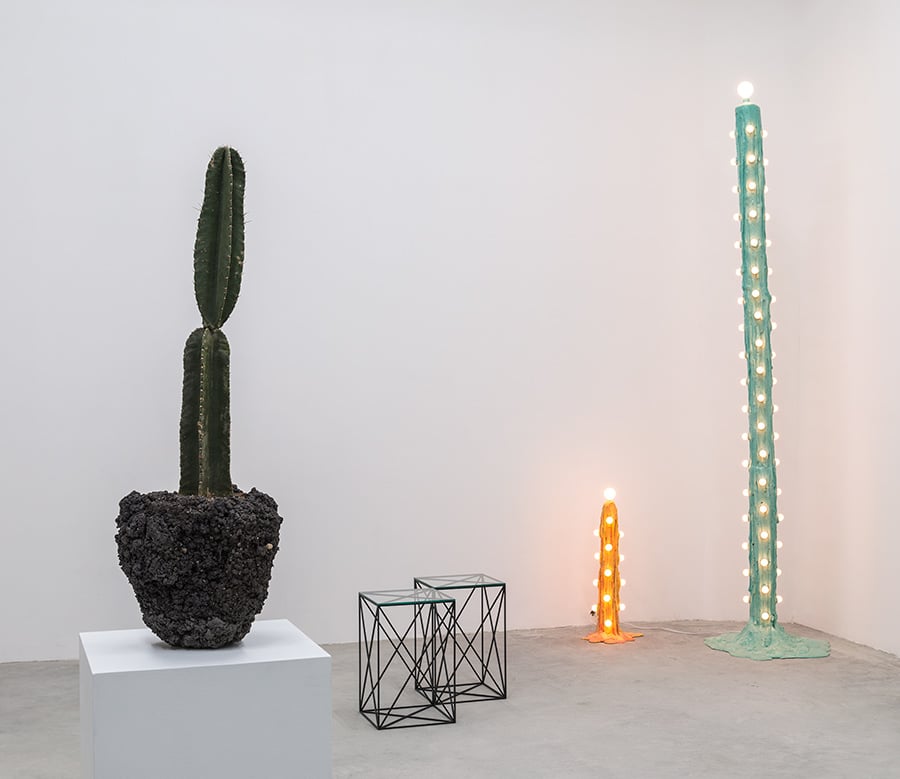
“It’s very hard today for people to get the kind of exposure they need, because the market is very much slanted towards the people who can pay to play,” Mastrangelo says. “We know that if you go to a good school, you do this, you do that, you’re gonna get far in the art world or the design world. If you go to Eindhoven, guess what? Your foot’s in the door. I’m trying to level that out a little bit.”
To that end, he isn’t just giving designers a forum to showcase their work; he’s also helping designers to realize their work, as in the case of the tall cactus-looking lamps by Joseph Algieri that occupied one corner of the show. “Look, he’s a young designer, artist, and he has a tiny studio in Bushwick—like a 50-square-foot studio,” says Mastrangelo, who challenged Algieri to make a 10-foot-tall lamp, something that was only possible by using Mastrangelo’s studio on the weekend. “I really didn’t want there to be limitations. Plus, I have all this space. I’d like to give people the opportunity to be a little bit more ambitious.”

Mastrangelo isn’t the only designer sharing space with their creative cohort. At Bec Brittain’s Flatiron showroom, the exhibition Strange Days, which runs through Friday, October 13, pairs her work—including her jewelry-like installation piece, Mercury—alongside that of Alex P White and Material Lust’s Christian Swafford and Lauren Larson, designers with a shared sensibility for what Brittain describes as “work centered around material and form at its heart, but also challenging and provocative.”
Much like the exhibition itself, the opening party for Strange Days was a clear indication of just how tight a community the city’s design scene has become: Jean and Oliver Pelle, whose Pelle showroom and studio is just around the corner; Wintercheck Factory’s Kristen Wentrcek and Andrew Zebulon Williams; Coil + Drift’s John Sorensen-Jolink; and New York newcomer Harry Nuriev of Crosby Studios were just some of the creators mingling among the work on display while an artist tattooed oranges atop a table.
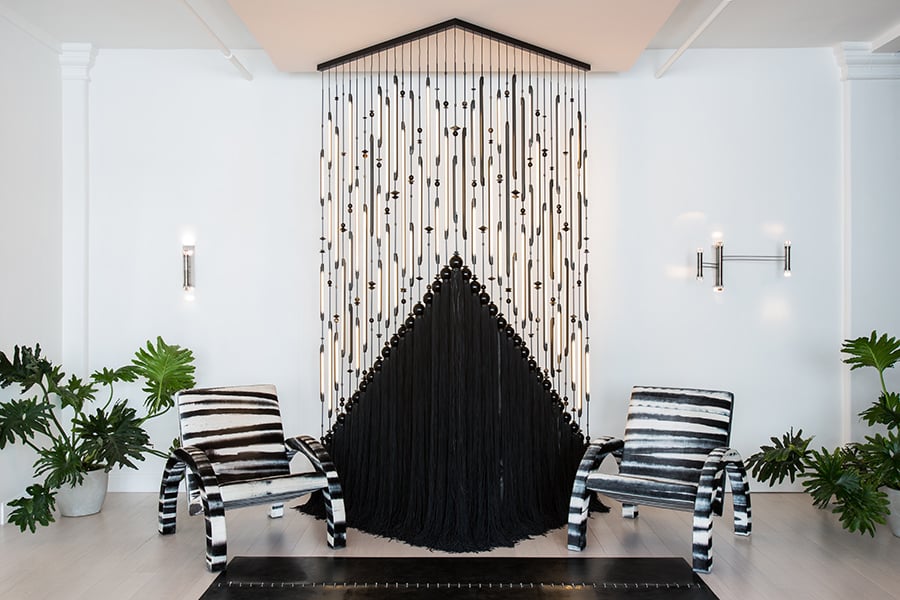
“Honestly, I love the NYC design scene today,” Brittain wrote in an email when asked about the current state of the city’s design community. “There is so much good work being made, and by good people. Rather than feel like they are my competitors, I feel a bond with fellow New York City designers, as we can identify with each other’s vision, ambition, and struggles.”
While for some designers collaborating is a way to celebrate the community, or, as Brittain says, “simply a different creative outlet” for engaging with the work, Mastrangelo also sees it as a reclaiming of control of the conversation in the tradition of the Impressionists’ independent exhibitions of the late 19th century. In fact, he’s even setting up a non-profit with the goal of an artist-run design fair during the major show season next spring.
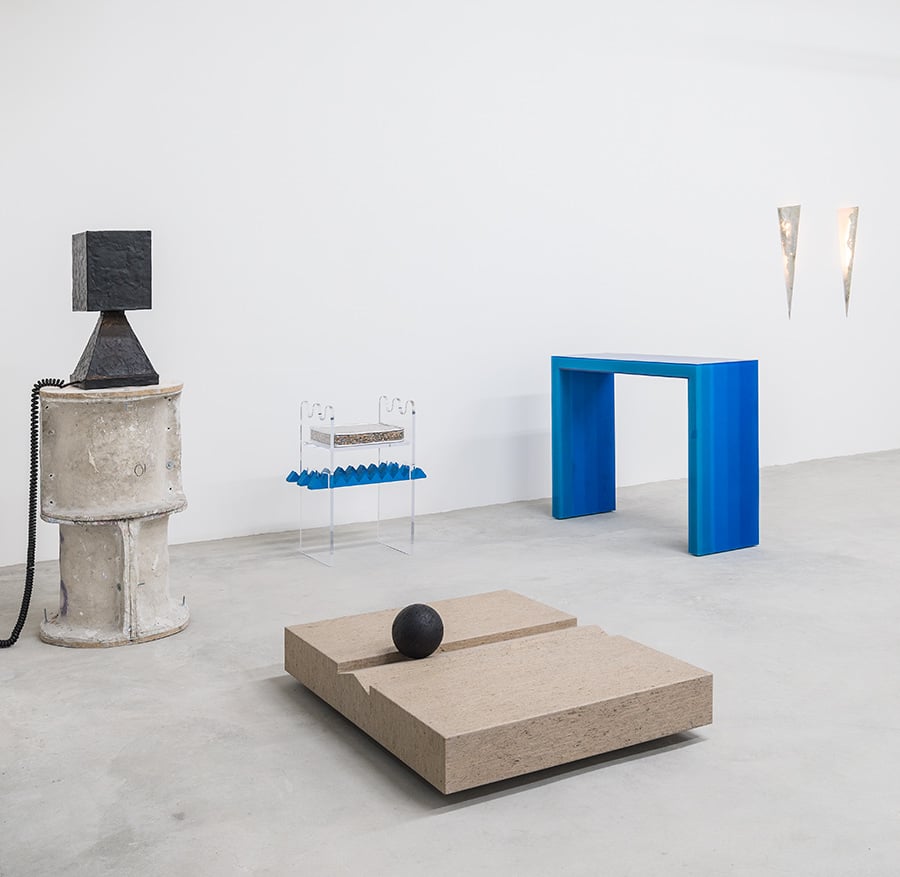
“I’m not a gallery, so I’m not taking commission on anything that’s going on in In Good Company. The entire idea was that the sales and the visibility go right back to the artists,” Mastrangelo says, noting that participating in design fairs can cost a designer upwards of $100,000 when you consider the costs of manufacturing and transporting the work, hiring PR, and simply renting space to show. To foot the bill, designers often partner with galleries, which can offer funding and connections in exchange for a chunk of the sales. This Gagosian-style gallery model, as Mastrangelo puts it, is the economic system that’s dominated cultural commerce for the past half-century.
“That doesn’t mean that that’s the model that works,” Mastrangelo says. “That just means that one guy came up with it, everybody jumped on board, everyone’s making a lot of money and they were like, ‘Great, let’s stick with this one.’”

Now, instead of waiting for gallerists to present their work, today’s creatives can reach their audience directly, thanks in part to social media. “We can now get more visibility from one Instagram post than an entire art fair. That’s what’s so powerful,” Mastrangelo says. “Every single day we’re getting DMs from people on Instagram that turn into real sales. I’m talking about real estate developers, collectors, interior designers. Now the idea is, ‘Why should I pay a gallery to do that work? Let’s put on a fair. We’re the ones they’re coming to see, right? They’re coming to see the work. Let’s just put the artist who’s making it in front of them.’”
You may also enjoy “Paola Antonelli on Her Upcoming MoMA Exhibition Items: Is Fashion Modern?.”












